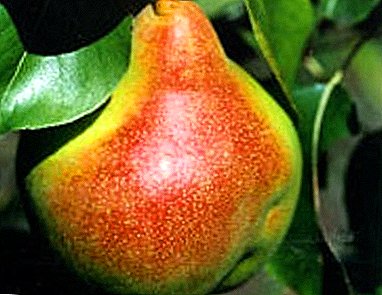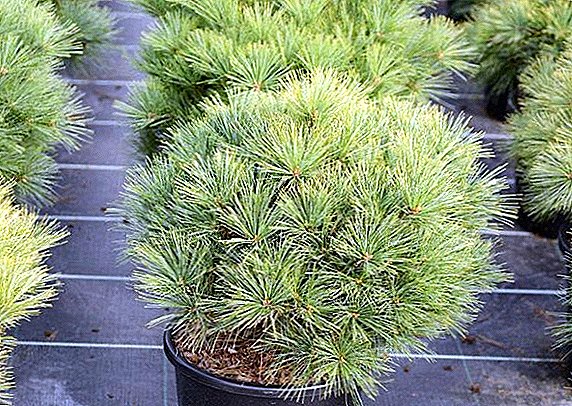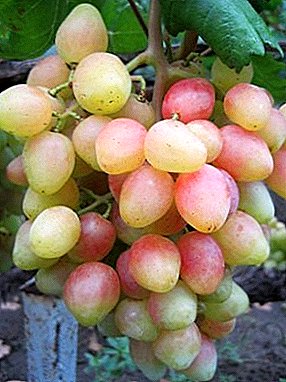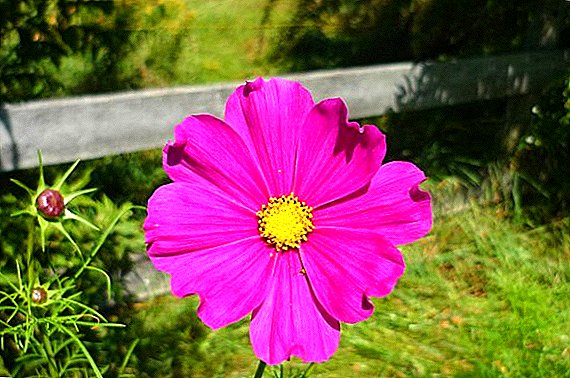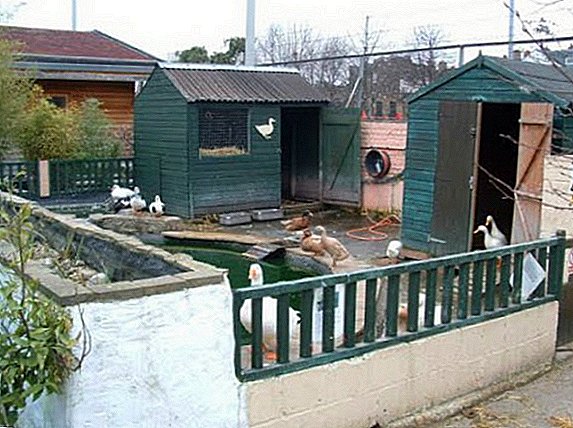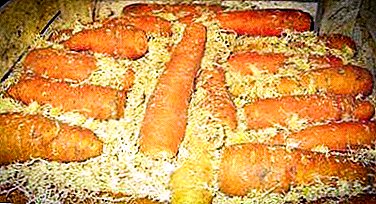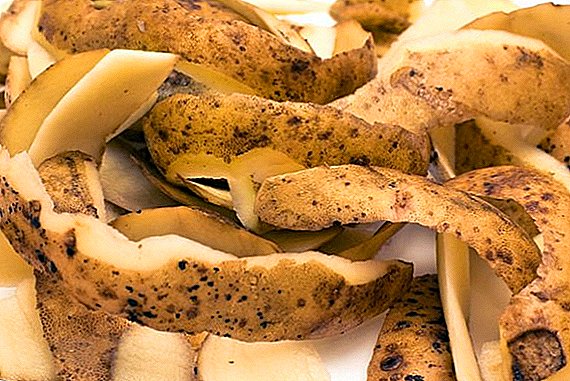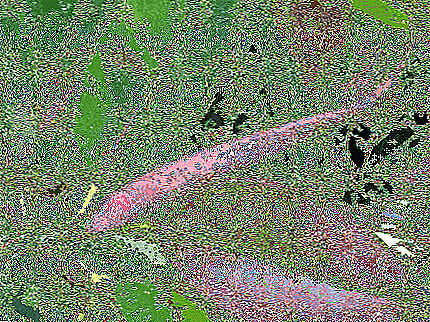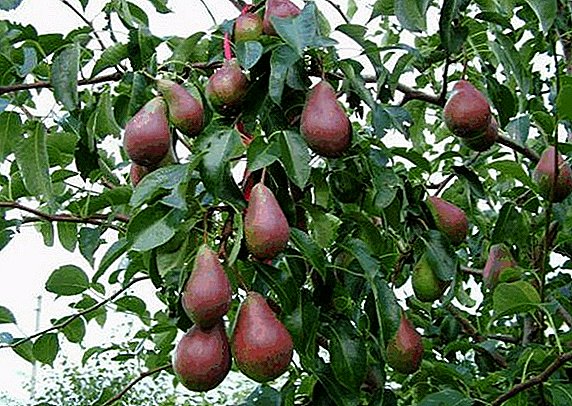 Early autumn pear "Bryansk Beauty" refers to the elite line of pears. Tasters give her the highest marks for juicy, very sweet flesh, scarlet color of the filling sides and attractive aesthetic appearance. In the description of this variety should be mentioned not only high taste, but also the self-fertility of the tree, and the minimum risk of damage by early frosts.
Early autumn pear "Bryansk Beauty" refers to the elite line of pears. Tasters give her the highest marks for juicy, very sweet flesh, scarlet color of the filling sides and attractive aesthetic appearance. In the description of this variety should be mentioned not only high taste, but also the self-fertility of the tree, and the minimum risk of damage by early frosts.
Inference history
Pear varieties "Bryansk beauty" became the owner of this name is not just. Brought out near the city of Bryansk by N. I. Rozhnov, it became an enticing novelty and soon filled up the ranks of pear varieties of elite varieties. To date, the history of the discovery of this variety is not known for certain.  According to the most probable version, the parents of the “Bryansk Beauty” were pear varieties “Williams Red” and “New Year”. Despite the fact that this variety was developed specifically for the Black Soil Region, it very quickly gained popularity in many other regions. Pear spread throughout the central part of Russia, in particular, it was allocated among other gardeners of the Urals.
According to the most probable version, the parents of the “Bryansk Beauty” were pear varieties “Williams Red” and “New Year”. Despite the fact that this variety was developed specifically for the Black Soil Region, it very quickly gained popularity in many other regions. Pear spread throughout the central part of Russia, in particular, it was allocated among other gardeners of the Urals.
Attention gardeners also attract such varieties of pears: "Tenderness", "Otradnenskaya", "In memory of Zhegalov", "Petrovskaya", "Avgustovskaya dew", "Children", "Rogneda", "Elena", "Fairy tale", "Nika", "Lada", "Severyanka", "In memory of Yakovlev", "Favorite Yakovlev", "Duchess".
Tree description
The tree is usually not very tall, reaches medium height. The shape of the crown resembles a tapering pyramid. Parent pear "William Red" gives this variety a distinctive feature: the tree has a reddish tint.
Until the formation of the apical bud, the young shoots have a burgundy color, especially noticeable on the upper leaves of young branches. The same reddish tinge has bark. The leaves on the tree turn green only with time, becoming saturated, dark and glossy.

Fruit Description
The fruits of the Bryansk Beauty are large, have a scarlet color and an attractive appearance. The form can sometimes change, but more often it is elongated, elongated and pear-shaped. Dense skin on the fruit has a dark burgundy color, it is smooth to the touch and rather dull.
The flesh has a pleasant cream color. It does not have a bright smell, with only a barely perceptible floral scent. Among the taste qualities there are such as sweetness, juiciness, softness, tenderness, there is a slight sourness, the fruit seems a bit oily. When eating pears, it seems as if its pulp just melts in the mouth.
Did you know? The history of pear tree has more than three thousand years! For the first time they began to cultivate it in ancient Greece. At that time, pear fruits were called gifts of gods and sacrificed to goddesses Hera and Aphrodite.
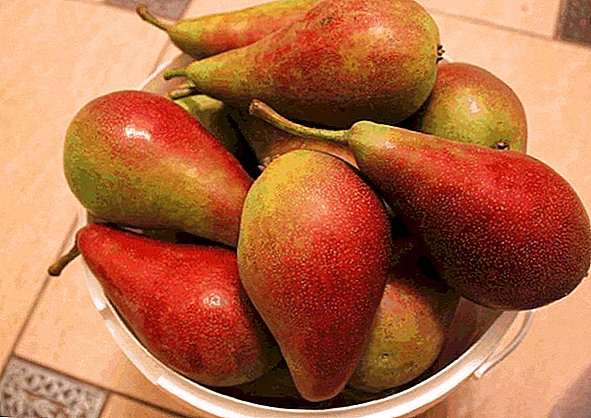
Lighting Requirements
"Bryansk beauty" pretty demanding lighting. It needs a lot of light, a spacious area so that the sun does not block other objects. If this condition is observed, the pear accumulates sugar well. However, you should avoid the appearance of drafts and stagnant water. Such negative factors can adversely affect the well-being of the tree.
Read about what varieties of pears are suitable for growing in the Moscow region, Siberia, the Urals and the middle band.
Soil requirements
The site should be spacious and not shaded. Groundwater should flow at a depth of about three meters from the surface. If the depth is less, stagnant water will cause the root system of the tree to rot. Low acid or neutral soil environment is most favorable for the plant. It is advisable that it is light, air permeable, fertile and nutritious.
Pollination
Pear varieties "Bryansk beauty" refers to the type of samoplodny trees. This means that it is able to pollinate itself and does not need other pollinators to make fruit. This feature is an advantage of the variety if there are no suitable pollinating plants nearby. But the harvest without them may not be very rich.

Important! Scientists note that self-fertile varieties are unstable - their productivity depends not only on climate change, but also on the place of growth.
In order to provide themselves with a stable harvest, it is desirable that next to the "Beauty" was a tree pollinator. The main condition: the flowering of both plants should fall down at about the same time. If suitable trees grow on a neighboring summer cottage, you can not plant this on your own plot. However, practice shows that the more pollinators are around, the higher and more stable the yield.
For additional pollination on the tree, you can graft other varieties of pears. However, they should not be too much. Due to the different period of ripening and flowering, grafts can grow greatly in a couple of years, interfering with the good lighting of the Bryansk Beauty.
Fruiting
Pear begins to bear fruit quickly - from the third year after planting, and by the sixth year of life, it is gaining maximum yield. Fruits ripen at the very beginning of autumn: approximately in the first half of September or closer to its middle.
Flowering period
To the great joy of gardeners, "Bryansk Beauty" is not threatened by frost and freezing, because the flowering period begins quite late in her - two or three weeks later than other types of trees of this species.
 At the time of blooming, the flowers of the cold are already passing completely, and the tree is not threatened by return frost. Most often, almost the entire period of flowering "Beauty" falls on May.
At the time of blooming, the flowers of the cold are already passing completely, and the tree is not threatened by return frost. Most often, almost the entire period of flowering "Beauty" falls on May.
Gestation period
The beginning of September is the time to pick ripe fruit. Full maturity occurs in the first two weeks of the month. It is very simple to determine that the harvest can already be harvested: before that, the immature dark green solid pears become a little softer, turn yellow, and the dark red tint of their sides dyes most of the skin.
Yield
Since this variety belongs to the self-propelled plants, in the absence of pollinators, it cannot boast a large crop. Despite the fact that the flowering is quite abundant, in the autumn the number of fruits is not very large - you can collect from one tree about 20 kg of crop. Pears almost never grow in pairs or clusters, most often only one by one.
Low yield is compensated by large beautiful fruits. On average, each of them weighs about 200 g, but in particularly favorable years the weight of one pear can reach 450 g! If there are suitable pollinators near the “Belle”, the soil is nutritious and the amount of moisture is sufficient, then the harvest from one tree can increase to 30 kg.

Important! To increase yields, planting pollinators near a pear is recommended.
Transportability and storage
After the fruit is picked up in mid-September, the Bryansk Beauty can be stored for about two weeks. In a refrigerated room, this period is extended to two months.
For transportation and storage of pears is better to use cardboard boxes. At their bottom, you need to lay sheets of paper, and even better to cover it with a thin plastic film. Next, the fruits are neatly stacked in two layers, wrapped with film on top. This helps to avoid evaporation and increase the carbon dioxide content, which allows the fruit to be fresh much longer.
Important! There is a direct relationship between harvesting a tree from a tree and placing it in a cool store: the shorter the gap between these actions, the longer the fruit will remain fresh.

Disease and pest resistance
"Bryansk beauty" is considered quite unpretentious. It quickly recovers from sudden frosts, tolerates winter well. Dangerous for her are only sudden changes in temperature. - they are fatal to the pear.
This tree has high immunity and very rarely gets sick. It is not afraid of powdery mildew. And the caterpillars of the pear moth, preferring only summer varieties, do not threaten to spoil the fruits of the autumn “Beauty”: its dense smooth skin does not allow the larvae to get out.
The only threat remains scab damage. But the pear is very resistant to its appearance. The disease can appear only in very rich in rain years, when the humidity is too high. Only such conditions can provoke the spread of scab, which begins on the leaves, and eventually goes on to the fruit, stopping their growth and making it unfit for consumption.
Did you know? This tree is valued for very durable wood. Created from her musical instruments, furniture and even dishes keep their appearance unchanged for hundreds of years.

Drought tolerance
The tree does not tolerate drought. In the absence of a sufficient amount of moisture pear fruit badly. Its fruits become small, dry and unsweetened.
Winter hardiness
Frost resistance in pears of this variety is high. In middle latitudes, it can withstand temperatures as low as -35 degrees. Tree not afraid of frost. Even if it freezes, the recovery period is short and successful.
Fruit use
The pear is universal for home use. Its fruits have an unsurpassed taste and can be eaten fresh. It is well suited for fruit salads, for the preparation of fruit purees, which can be used for feeding on infants, for filling a variety of pastries.
The fruit turns out delicious compotes. Pears can be preserved for winter consumption. However, the taste of these fruits is the most valuable fresh.

Advantages and disadvantages
Like any other, this variety of pears has its pros and cons. However, the advantages of this variety is still greater.
pros
"Bryansk Beauty", referring to the elite line of pears, has a number of advantages:
- she begins to bear fruit quickly, only after three years after planting;
- six years later, you can harvest the maximum yield from the tree;
- high level of winter hardiness and frost resistance;
- natural immunity to scab, aphid and fungal diseases;
- excellent taste;
- beautiful decorative appearance of both fruits and crowns of a tree;
- self-fertility, independence from pollinator plants;
- natural immunity to major pests.

Minuses
However, like any fruit tree, it has disadvantages, although they are not so many:
- unstable productivity at self-pollinated;
- sensitivity to drought, which is manifested in the loss of fruit taste.
Pear varieties "Bryansk beauty" is famous for excellent taste, tenderness of the pulp, attractive red-faced appearance of large fruits. She quickly begins to bear fruit and is well acclimatized not only in the Black Soil Region, but also in the central zone of Russia. The tree does not require unnecessarily painstaking care and will long please you with sweet and juicy fruits.


